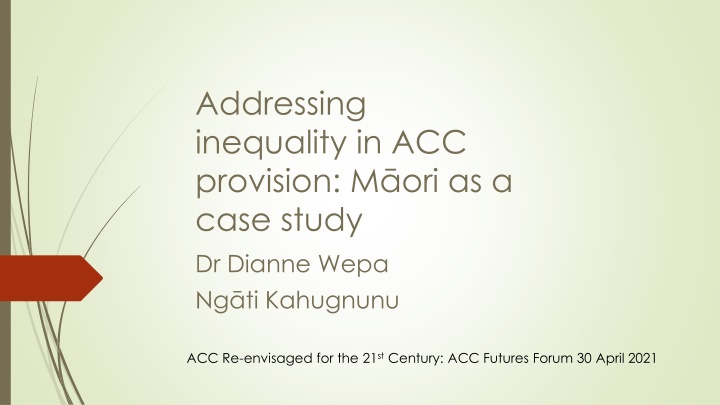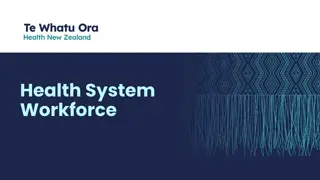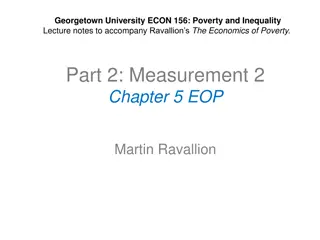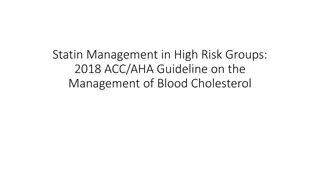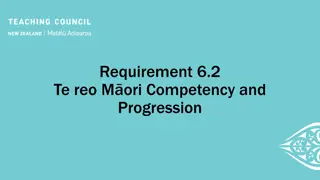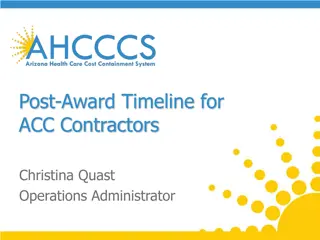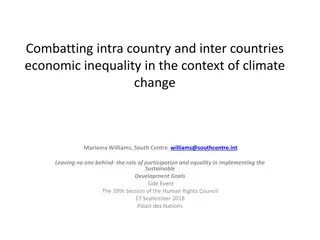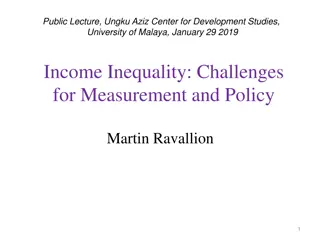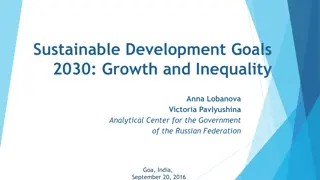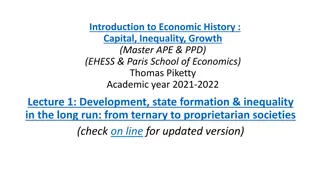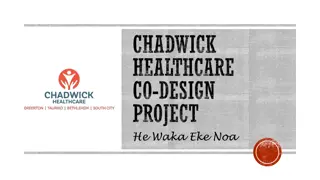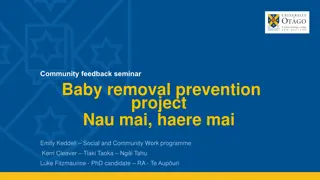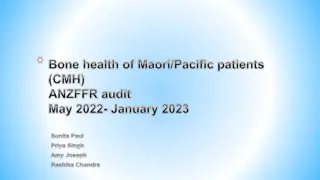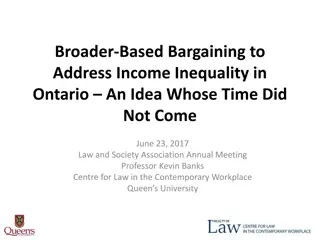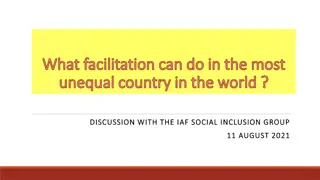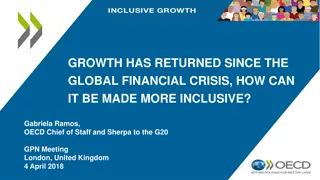Addressing Inequality in ACC Provision: Maori as a Case Study
This article delves into the disparities faced by Maori in ACC provision, highlighting challenges, gaps, and proposed solutions through a comprehensive review of existing data and reports. It explores the need for systemic and individual-level changes to enhance Maori responsiveness within the healthcare system.
Download Presentation

Please find below an Image/Link to download the presentation.
The content on the website is provided AS IS for your information and personal use only. It may not be sold, licensed, or shared on other websites without obtaining consent from the author.If you encounter any issues during the download, it is possible that the publisher has removed the file from their server.
You are allowed to download the files provided on this website for personal or commercial use, subject to the condition that they are used lawfully. All files are the property of their respective owners.
The content on the website is provided AS IS for your information and personal use only. It may not be sold, licensed, or shared on other websites without obtaining consent from the author.
E N D
Presentation Transcript
Addressing inequality in ACC provision: M ori as a case study Dr Dianne Wepa Ng ti Kahugnunu ACC Re-envisaged for the 21st Century: ACC Futures Forum 30 April 2021
Outline 2 What do we know? Current situation WAI 2575 Health & Disability System Review ACC M ori responsiveness What are the gaps and what needs changing? How do we change it? Systems level Personal level Conclusion/Summary Patai/Questions
What do we know? 3 M ori: Experience a higher burden of many serious health conditions Life expectancy is 7 years less than non-Maori Have higher rates of unmet health need Higher disease-specific mortality rates compared with non-Maori Under-represented in receipt of a range of services in proportion of the population Lower referral rates for elective services: orthopaedic services (knee, shoulder, hip, spine) radiology, physiotherapy, home & community services and duration of weekly compensation claims Differential access in service utilisation with non-Maori (5-50%) depending on the type of service, age group and gender Wren (2015), Wepa & Wilson (2019), Reid et al (2018), MOH (2021)
WAI 2575: Waitangi Tribunal Report 2019 4 We are faced with the prospect of whether an important and hitherto insufficiently recognised cause of the inequities suffered by M ori as a population group in the last two decades is the legislative and policy framework of the primary health care system itself. At the 2018 hearings for stage one of the inquiry, Director-General Dr Bloomfield stated : As a population group, M ori have on average the poorest health status of any ethnic group in New Zealand . The Crown has invested some $220 billion dollars into the health system alone since 2000, with what appears to be little measurable improvement to M ori health outcomes. In a system that is meant to be focused, in part, on reducing health disparities suffered by M ori, this is of great concern.
Health and Disability System Review 5 M ori Health Authority Ensure the health system is performing for M ori Partner with MOH to advise Ministers on hauora M ori Directly fund innovative health services targeted at M ori (including Kaupapa M ori services) Work with Health NZ to plan and monitor the delivery of all health services Iwi-M ori Partnership Boards Single nationwide health service Refocus the role of MOH Create a new organisation, Health NZ Create a new M ori Health Authority Establish a new Public Health Agency National public health service within Health NZ
6 Bi-lingual headings M ori Customer Advisory Panel Working with us as a Rongo M ori practitioner Keep M ori safe Te Tiriti o Waitangi and Wh ia Te Tika M ori Strategy M ori Injury Prevention Portfolio Wh nau Ora Commissioning Agency collaboration: Te Puni K kiri and Oranga Tamariki ACC Website Whangaia Ng P Harakeke: addressing underlying causes of violence Iwi-led approaches to injury prevention Kaupapa M ori research: Kaum tua focus
What are the gaps and what needs changing? (Systems level) 7 M ori providers under-represented especially with home support funded by ACC Lack of choice of provider for M ori M ori in prison: Stage Two of the Health Services and Outcomes Kaupapa Inquiry M ori mental health including suicide and self-harm Alcohol, tobacco and substance abuse for M ori 50% of NZ s prison population are Maori vs 15% of the NZ population M ori living with disabilities part one and part two ACC: 2 views on substantive inequity & inequality One in every 142 M ori is in prison One in every 808 non-M ori is in prison 1. Health lens Data not available on M ori uptake of ACC while in prison 2. Business Insurance/Actuarial Approach
How do we generate new forces for change and activate the next leap forward in M ori health? 8 Business Insurance Approach Equity and Fairness is based upon the principle that all insureds with the same characteristics should have the same expectation of loss and should be listed under the same underwriting classification and have the same premium rating (ACC Levy). Whether a service is used or not, is the of the client economic choice irrespective of socio- economic status and cultural views on health and modes of service delivery. Health Lens Approach Equity and Fairness are not necessarily the same things. Health needs are different between population groups and differences in service utilisation are expected. The presence of difference does not necessarily mean that it is unfair.
Ruru/Shake hands with the Mori Health Authority 9 What would it look like? What would be the enablers and barriers? Result in more sophisticated, refined and targeted service delivery pathways designed to meet the needs of Maori (which in turn benefits other population groups) Tailored to injury treatment and rehabilitation need, socio-economic position and cultural preferences
What are the gaps and what needs changing? (Personal level) M ori are presenting for treatment HOWEVER During engagement with the health provider M ori are not being referred to services to which they are entitled SO What s going on during this engagement/interaction? SEVERAL POSSIBILITIES Racism/Unconscious/Conscious Bias? Lack of cultural literacy education Lack of accountability POSSIBLE SOLUTION Include cultural satisfaction outcomes within Personal Key Performance Indicators (KPIS) Accountability can then be addressed and behaviour change occurs 10
Summary/Conclusion 11 The Maori experience of ACC consistently involves patterns of systematic and substantive under-representation in a range of services. Under-utilisation is most notable in the referral and uptake of elective surgery services, home and community support services and duration of weekly compensation claims (from 5% - 50%). There is a tension between the health lens and business insurance view of equity as service utilisation is a matter of personal choice. WAI 2575 and the Health & Disability System Review are opportunities to engage with the changes within the New Zealand Health system. The Maori Health Authority provides a major resource for engagement with ACC. Systemic and Personal changes are required to sustain an all-of-system approach improve health outcomes for M ori as they deserve no less.
